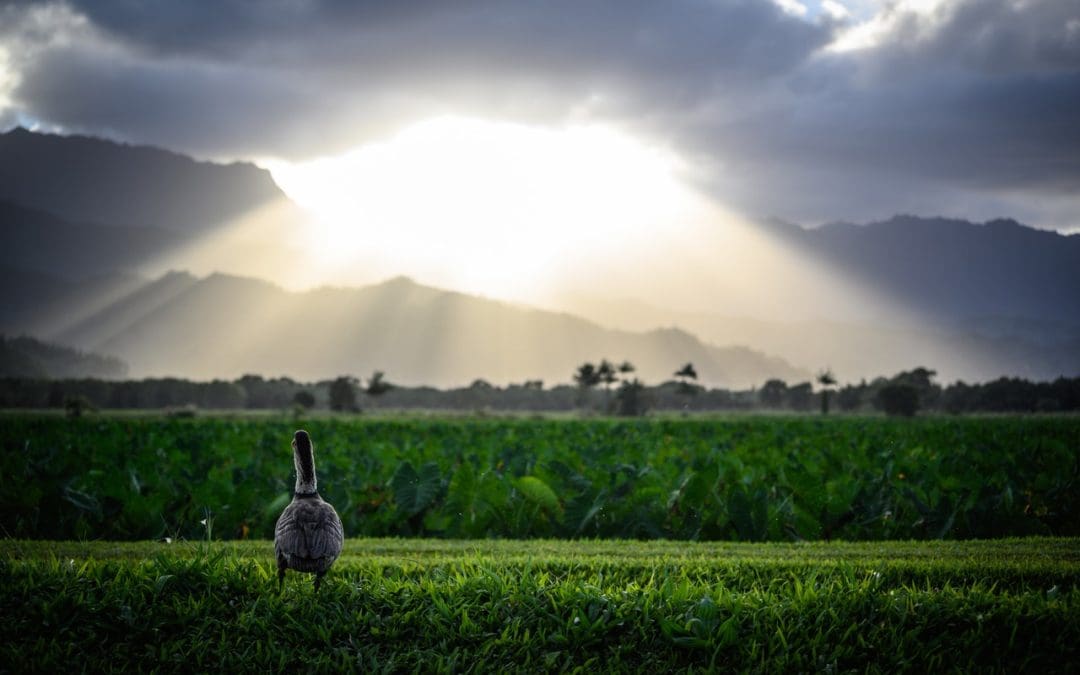Did you know Volcanoes National Park is home to more than 120 bird species? It’s true. That makes the Big Island an ideal place to visit for birdwatchers and nature-lovers. Here’s what you need to know about birdwatching near Volcano Village HI just steps from our Volcano Village Hotel.
Birdwatching in Hawaii Volcanoes National Park
This 500-square-mile park is home to several native bird species. In recent years, eruptions have disrupted the habitats of some, while creating new earth for others to flourish.
Some birds you may see on your visit are:
Hawaiian Goose
The Nene, also known as Hawaiian goose, are named for their soft call. They’re native to the Hawaiian Islands and exclusively found in the wild on Oahu, Maui, Kauai, Molokai, and Hawaii. It’s thought that the Nene evolved from Canada geese that migrated to the island about 500,000 years ago, shortly after the island chain was formed.
Hawaiian Hawk
The Hawaiian hawk is a genus of Buteo raptor native to Hawaii, and currently only found on the Big Island. They’re easy to identify by their bulky bodies which are large relative to overall length and wingspan. They’re the only hawk endemic to the state, and fossils indicate they inhabited Hawaii, Molokai, Oahu, and Kauai at one time. Today, they only breed on the Big Island and are protected as an endangered species in the US.
Elepaio
These native Hawaiian birds (there are three classifications of them) measure just 14 centimeters long and weigh 12 to 18 grams. One species inhabits the Big Island, another Oahu and the third Kauai. Elepaios are best known for their song – they’re the first to sing in the morning and the last at night. They nest between January and June. They’re a very adaptive species, no subspecies are extinct, but two are quite rare.
Omao
One of only two remaining species of native thrush in Hawaii, the Omao play a critical role in spreading native plants throughout the forest. They prefer native forests and while they have not been seen in the Kona and Kohala areas of Hawaii Island for over a century, there seems to be a distinct population in the subalpine zone of Mauna Loa.
Apapane
The Apapane is a species of Hawaiian honeycreeper that lives on the islands of Hawaii, Maui, Lānai, Kauai, Molokai and Oahu. Commonly, they forage in the canopies of ʻōhia trees, drink nectar from the flowers while simultaneously pollinating them. Their feathers were often used in the making of capes, helmets, and leis for Hawaiian nobility.
Iiwi
The Iiwi, or Scarlet Honeycreeper, used to be among the most common birds in Hawaii. They are well-known for their lipstick-red plumage and distinctive song. Today, Iiwi are restricted to just three islands and face many challenges. Malaria, a shrinking habitat, climate change leading to mosquito-transmitted disease, plus non-native predators all threaten the Iiwi.
Hawaii Amakihi
Another Hawaiian Honeycreeper, the small amakihi can be found on Hawaii, Maui, Molokai, and rarely Lanai. Males are bright yellow, and females are yellowish green. Abundant in high elevation native forest, they’re also found at lower elevations in non-native forest. They move quickly across leaves and small branches in search of nectar, insects, and fruit.
Other birds you’ll see on the Big Island are Pacific Golden-Plover, White-tailed Tropicbird, Black Noddy, Akiapolaau, Hawaii Creeper, and Hawaii Akepa. Many nesting sites are restricted, however, as they are protected.
We hope you enjoyed learning about birdwatching near Volcano Village HI. Learn more about our favorite activities. Planning a visit? Visit our Properties & Rooms page to read about our lodging options. We’re just minutes from Volcanoes National Park. We look forward to welcoming you.

